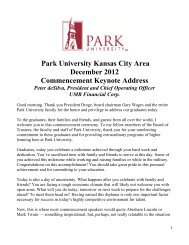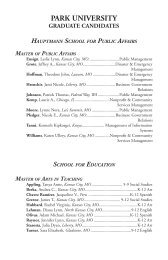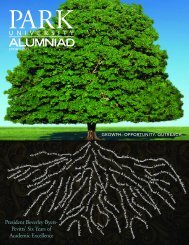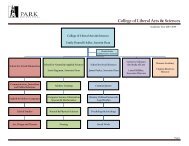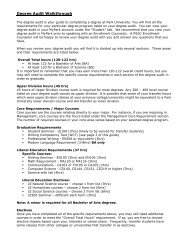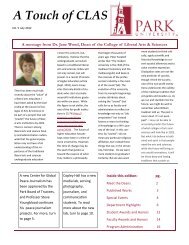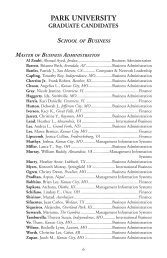How to Write a Radio Serial Drama for Social Development- PDF
How to Write a Radio Serial Drama for Social Development- PDF
How to Write a Radio Serial Drama for Social Development- PDF
Create successful ePaper yourself
Turn your PDF publications into a flip-book with our unique Google optimized e-Paper software.
110 Chapter Seven: Writing <strong>for</strong> the Ear<br />
a barefoot person walking on earth generally make no sound at all. When<br />
a character comes in<strong>to</strong> or goes out of the scene, it is much more realistic<br />
<strong>to</strong> have the ac<strong>to</strong>r move <strong>to</strong>wards (FADE IN) or away from the microphone<br />
(FADE OUT) while speaking than <strong>to</strong> add the sound of footsteps.<br />
EXAMPLE<br />
1. PASCO: (FADE IN) Hey, Nongma...Nongma...Where are you (ON<br />
MICROPHONE) Ah, there you are.<br />
2. NONGMA: Pasco, my friend...What is it What are you so excited about<br />
3. PASCO: (HAPPILY) They’ve arrived. They’re here at last.<br />
4. NONGMA: Who’s here What are you talking about, Pasco<br />
5. PASCO: The street ac<strong>to</strong>rs...We’ve been hoping they’d come. And now<br />
they’re here Nongma, and they’re about <strong>to</strong> start their show.<br />
6. NONGMA: Hey, that’s great! (FADING OUT) Let’s go and watch them.<br />
7. PASCO: You bet...(FADING OUT) I’m coming. Wait <strong>for</strong> me.<br />
2. Use sound beds sparingly. A sound bed provides continuous sound<br />
throughout a scene. In a market scene, <strong>for</strong> example, the writer might call<br />
<strong>for</strong> a “Market Background Sound Bed” that would add noises typical of a<br />
market throughout the scene, such as trucks, people shouting, people<br />
buying and selling, and the like. Continuous background sound of this<br />
nature can be troublesome in serials, however, because of the frequent<br />
changes of scene. This can <strong>for</strong>ce the writer <strong>to</strong> call constantly <strong>for</strong> a “cross<br />
fade” from one sound effect <strong>to</strong> another or <strong>to</strong> use music <strong>to</strong> mark every<br />
break between one scene and the next. Such over-use of music <strong>to</strong> mark<br />
frequent scene breaks can be very distracting and can cause listeners <strong>to</strong><br />
lose track of what is going on. Unless a continuous sound bed is an<br />
essential element of a particular scene, it is better <strong>to</strong> avoid it. A similar,<br />
but less complicating, effect can be achieved by establishing the sound<br />
briefly at the beginning of the scene and then gradually fading it down<br />
and out under the dialogue.




